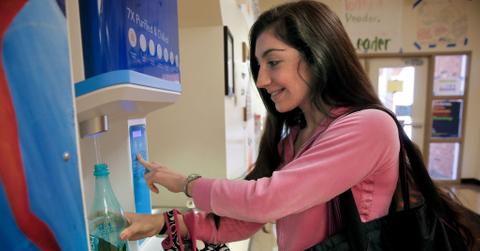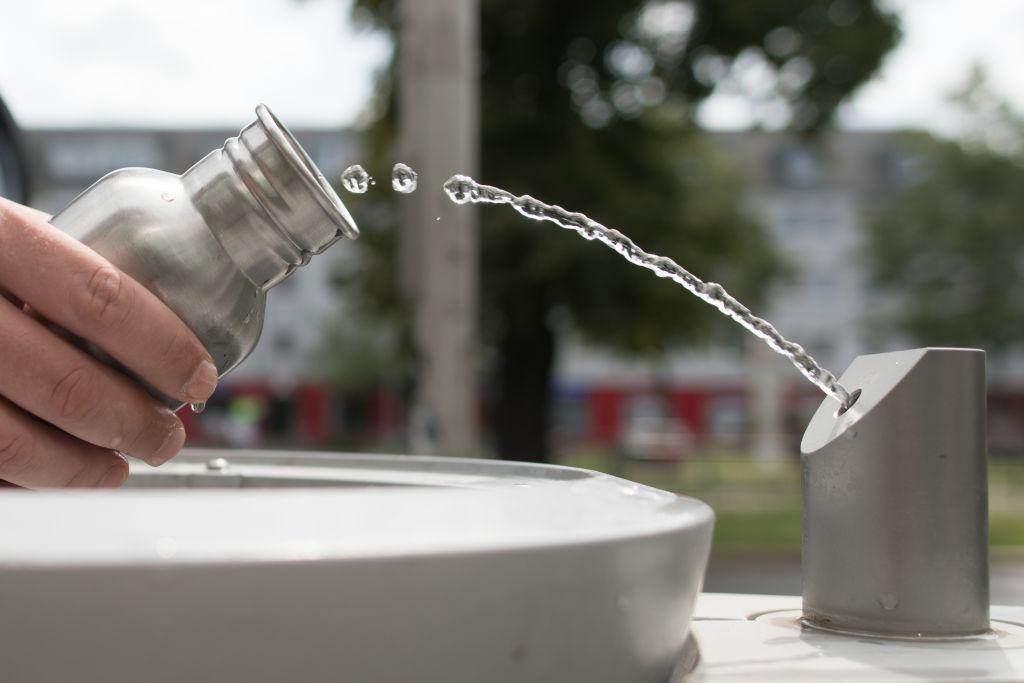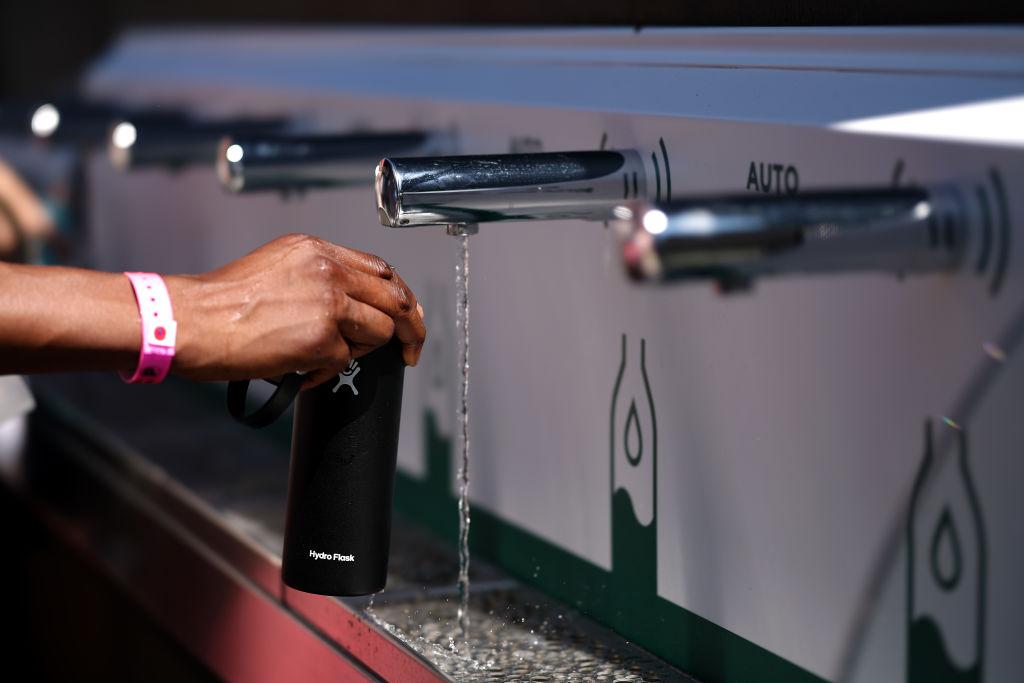Drinking Fountains Contain 50,000x More Bacteria Than Toilet Seats, Study Finds
Published Jan. 8 2024, 3:13 p.m. ET

Water fountains are teeming with tens of thousands of microorganisms that may have the public rethinking where to quench their thirst and refill their reusable water bottles, according to new research from WaterFilterGuru.
Using a reusable water bottle is an easy way to reduce your single-use plastic consumption and save money; however, the source of the water and where you fill your bottle (spoiler: airport and mall water fountains are amongst the dirtiest locales, according to the research) are key concerns, per the report. That said, switching to single-use water bottles is not the answer.
Below, we make sense of the research and clarify how concerned you should be about the bacteria that call public water fountains home.

Are water fountains clean?
According to the research from WaterFilterGuru, public water fountains have several different types of bacteria strains that inform how dirty and harmful their use may be. Some bacteria may be innocuous, others are mildly harmful (such as those that appear in spoiled food), and others are linked to disease.
For the study, the researchers swabbed popular locations where public drinking fountains are usually installed, including the airport, the gym, and shopping malls.
Water fountains at the airport, they found, harbor more than 50,000 times the bacteria of a toilet seat. They also found that shopping malls contain the dirtiest water fountains overall, featuring over 30 million colony-forming units (CFUs) of the type of bacteria than can be disease-causing.
If you need to refill your water bottle while working out, you might think twice about your local gym's drinking fountain, which the researchers found to have 20 times the bacteria of a companion animal's food bowl.
General water refill stations, the researchers stated, contain 4.8 million CFUs of the type of bacteria typically found in hospital-acquired infections, as well as the type of bacteria found in spoiled food. For reference, the researchers say a water refill stations can contain over 300 times the bacteria found on a companion animal's toy tennis ball.
Regular maintenance and disinfecting of water fountains can keep them clean.
WaterFilterGuru's results track with past research on the numerous types of bacteria found on public drinking fountain surfaces, including a 2017 paper published by the National Institutes of Health. The researchers of this study concluded that drinking fountain trough should be regularly disinfected with alcohol.
According to The New York Times, the bowl of the water fountain and the parts that come into contact most frequently with others' hands are the most bacteria-rich, though catching a disease from the water fountain itself is rare.
A 2020 article from the Associated Press addressed the understandable confusion and reluctance for many to drink from public water fountains since the COVID-19 pandemic began, ultimately recommending using a tissue to press the button that activates the drinking water to dispense, and washing one's hands after touching other surfaces of the fountain.

Is it safe to drink from drinking fountains?
The WaterFilterGuru research concluded that the public should educate themselves on the types of bacteria present on different public drinking fountains and make educated, responsible choices accordingly.
Germ paranoia and the quality of public drinking water is a legitimate concern for the public, per the water filtration brand Aquasana. However, the California-based Pacific Institute explains that early designs of water fountains that could, and did, spread diseases has likely influenced ensuing generations and their avoidance of public water fountains.
Ultimately, as the design of water fountains has evolved, per the Pacific Institute, the health risks associated with water fountains have largely been mitigated. Additionally, poor maintenance of a fountain itself is more likely to be the culprit for any illnesses contracted from using a water fountain. The WaterFilterGuru paper echoes the importance of regularly disinfecting drinking fountains.
In general, most of us seek to improve our impact on the environment and make choices that reflect these noble intentions.
If individual concerns regarding the cleanliness (or lack thereof) of public drinking stations exist, you can use a tissue to press a water bottle's button. Alternative eco-friendly solutions include requesting a nearby restaurant or coffee shop refill your water bottle, or keeping a portable bottle purification filter handy when you anticipate spending time outdoors or traveling.